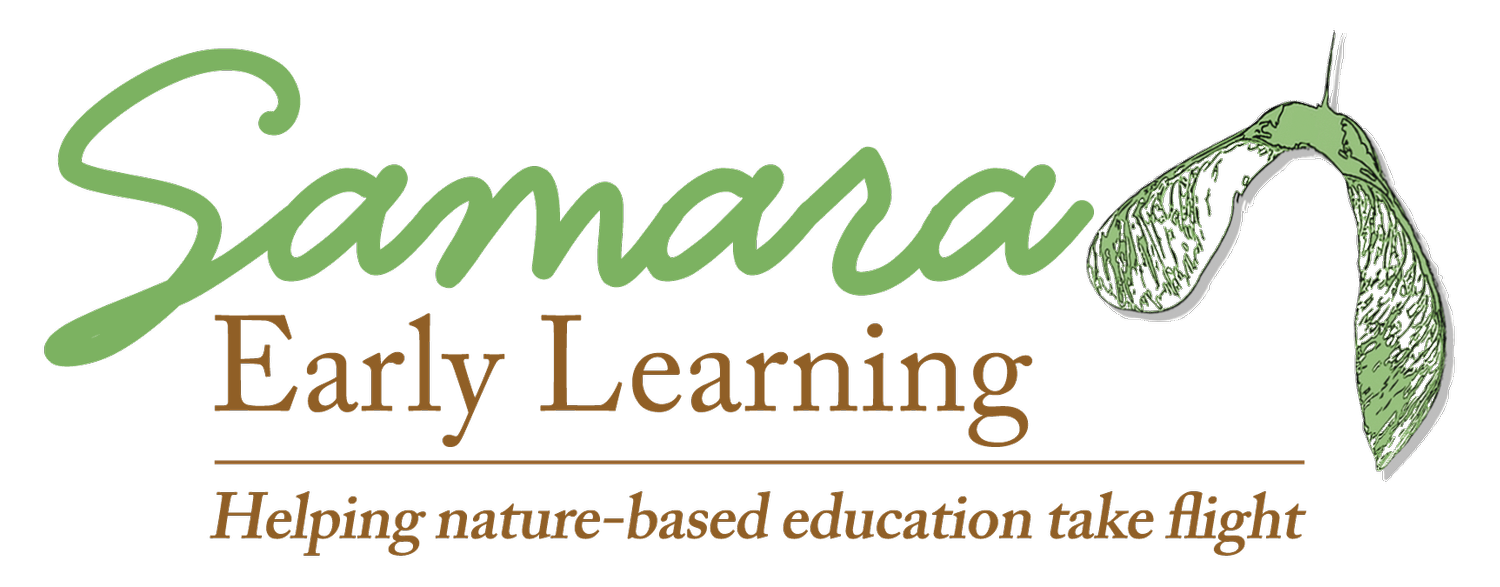Defining the terms in nature-based early childhood education
Key terms
There are many terms used in the world of nature-based early childhood education. Below is a brief description of how we define various terms. For a more comprehensive (and printable!) version click here for the “Sorting Out the Terms & Concepts of Nature-based Early Childhood Education” document.
-
Simply put, nature-based early childhood education for young children (0-8 years old) is where learning occurs in the context of nature. There are many program models that are considered nature-based early childhood education (NbECE) such as nature-based preschools (also called nature preschools), forest preschools (also called forest kindergartens), nature-based kindergartens, nature-based first grade, and so forth. In all of these programs nature is at the core of the curriculum, there is extensive daily outdoor time over the course of a school year, and teachers implement high-quality early childhood practices as well as high quality environmental education practices. In other words, nature and the outdoors permeate virtually every aspect of a NbECE program. So, while the model or program structure may vary there is a common approach to teaching children—nature pedagogy.
Keep in mind that integration of nature into early childhood education is on a continuum from no nature integration to the other end of the continuum where nature is infused in all parts of the program. A program that fully integrates nature blurs the lines between the indoor and outdoor space, outdoor time is extensive and often the first activity of the day, natural materials are found throughout the indoor space, and classroom activities are based on seasonal happenings. This full integration of nature is NbECE in its purest form. Our mission at Samara Early Learning is to help move early childhood programs away from the “no nature” end of the continuum and closer to full nature immersion.
-
Nature-based preschools, sometimes simply referred to as nature preschools, are licensed early childhood programs for 3-5 year olds where at least 30% of the class day is held outside, nature is infused into all aspects of the program, and the pedagogy emphasizes inquiry-based learning through play and hands-on discovery. This means the curriculum is emergent (i.e., based on children’s interests), but given the frequent outdoor time experiences are typically rooted in the seasonal happenings of the natural world. Additionally, nature is integrated into the indoor spaces, and the play areas have an overall appearance of a natural area rather than structured play equipment. Nature-based preschools include time spent beyond the designated play area, nature infused into the indoor spaces, and with nature as the driving theme of the curriculum (Bailie, 2010; Green Hearts, 2014; Larimore, 2011b, 2011a; R. C. Moore, 2014). Another way of describing this is nature is integrated into learning “indoors,” “outdoors,” and “beyond” (Warden, 2015). Nature-based preschools are different from forest preschools which include longer periods of time outdoors (70-100%) and limited use, if any, of indoor space (Larimore, 2016; Sobel, 2014).
This nature-based preschool model originated in the United States with the first nature-based preschool at New Canaan Nature Center in Connecticut in 1967. Until the early 2000s many referred to this model as nature-center based preschools (Bailie, 2010) and then the language shifted to nature-based preschools (Larimore, 2011). In many cases this history still influences the balance between learning in, about, or with nature in particular nature-based preschools. Today there are more than 250 preschools that self-identify as being nature-based. (A list of current nature-based preschools is maintained by the Natural Start Alliance.) Our goal at Samara Early Learning is for that number to grow into the hundreds and eventually thousands or programs that are implementing high-quality nature-based administrative and teaching practices!
-
Forest preschools are very similar to nature-based preschools in that they typically serve 3-5 year olds. In a forest preschool, however, 70-100% of the day is spent outdoors (Larimore, 2016; Sobel, 2014). As a result, the indoor space is typically less developed and primarily serves as a shelter from inclement weather. Like nature-based preschools, nature is infused into all aspects of the program, and the pedagogy emphasizes learning through play and hands-on discovery that emerges from the children’s interests. Historically forest preschools are rooted in the Germany Waldkindergartens and Swedish Skogsmulle program models (Sobel, 2014). Thus, many of these forest preschools refer to themselves as “forest kindergarten” which is the English translation from German. In U.S. contexts, we prefer to use “forest preschool” as it clarifies the age range and the fact these programs are typically outside of formal school systems which include kindergarten (i.e., the year before First grade).
-
Any student or parent that experiences a nature-based infant, toddler, or preschool program inevitably wants to attend a nature-based kindergarten (and first grade, second grade…). Like nature-based programs for younger children, elementary students have daily outdoor time as part of their curriculum. Nature is also brought into the classroom through physical materials, but also in the selection of reading materials, topics for small group activities, and so forth. In other words, nature is infused into all aspects of the classroom and serves as a tool to achieve learning outcomes.
“Nature permeates virtually every aspect of a nature-based early childhood education program.”
— Dr. Rachel A. Larimore, Founder & Chief Visionary of Samara Early Learning
What is a nature-based preschool?
Nature-based preschools are growing in popularity in early childhood education. In this video Dr. Rachel A. Larimore, Founder of Samara Early Learning, describes the broad concept of nature-based early childhood education and nature-based preschools specifically.
